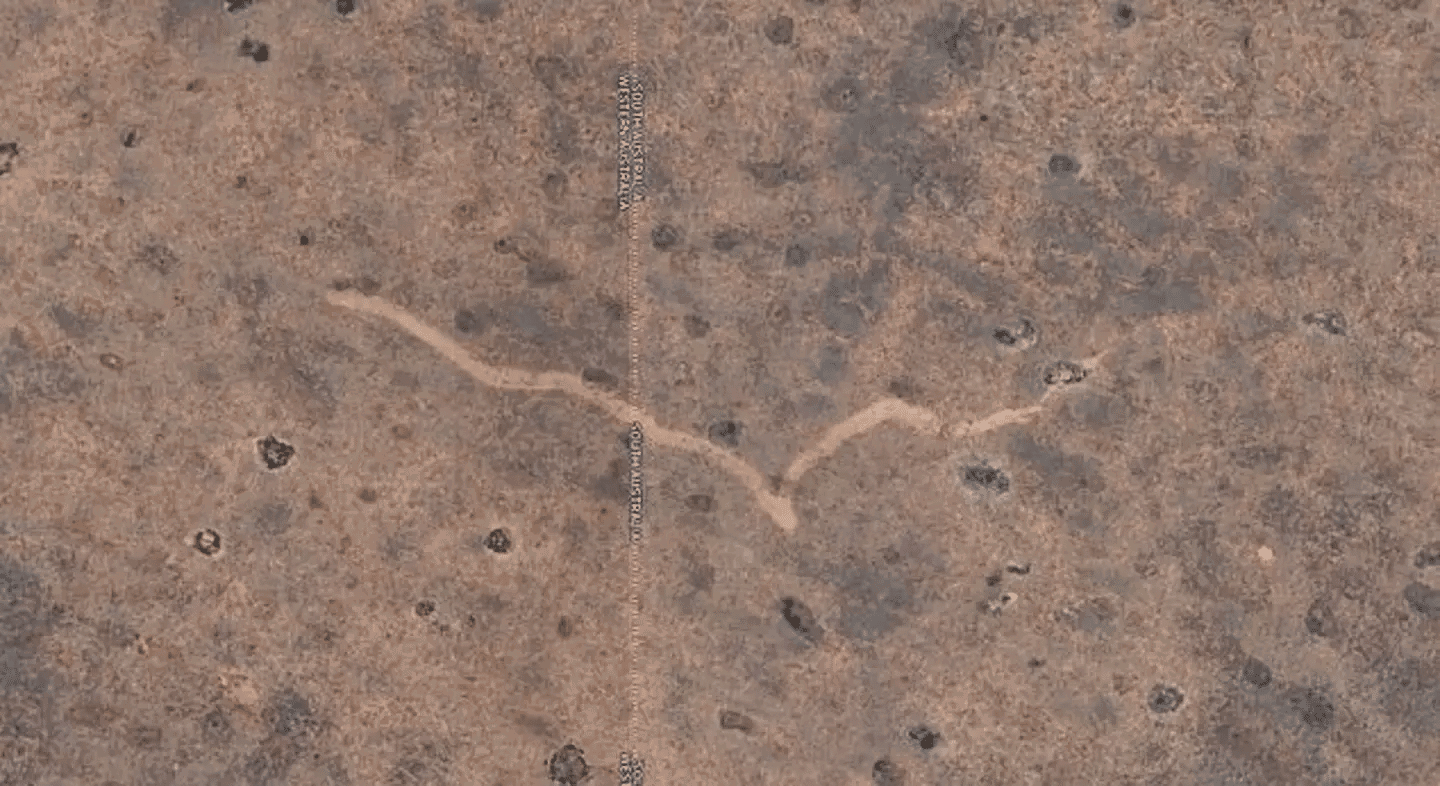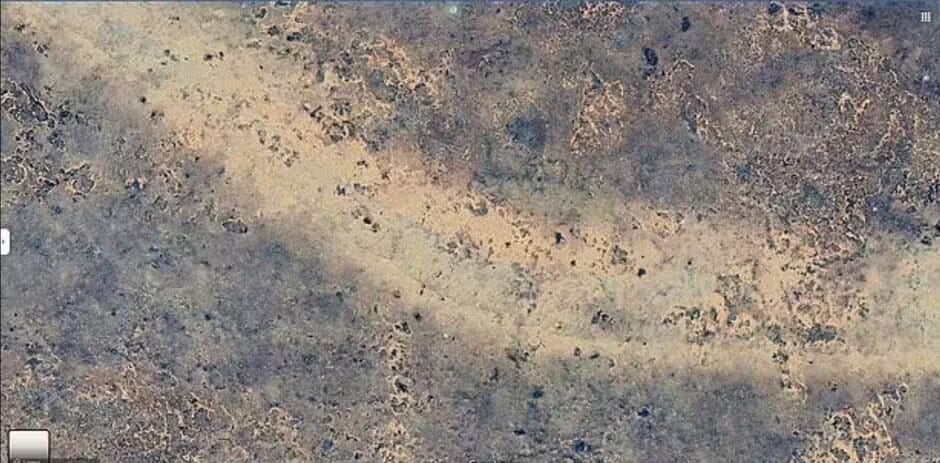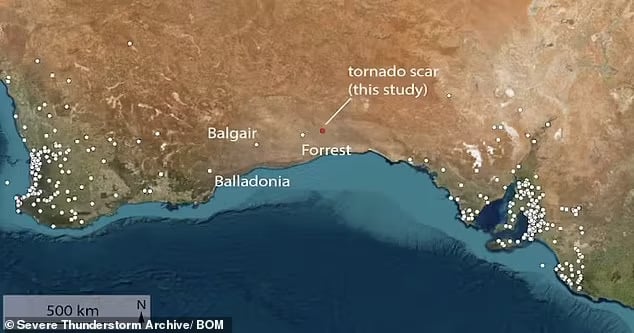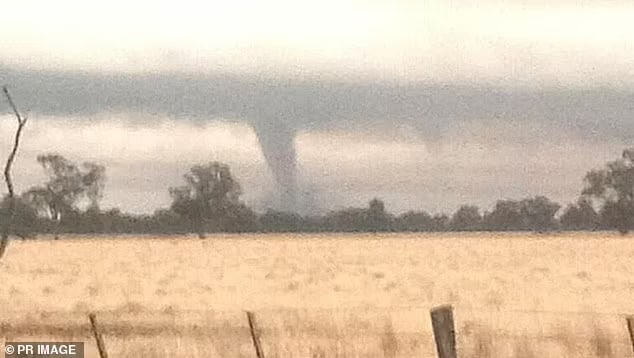While exploring Google Earth, a caver examining the Nullarbor Plain—a vast, remote region in southern Australia—noticed an unusual feature. What appeared to be a mere blemish on the landscape was, upon closer inspection, an 11-kilometer-long and 250-meter-wide scar. This unexpected finding has captivated scientists and ignited new research into the area’s extreme weather events.

Dr. Matej Lipar, an adjunct research fellow at Curtin University’s School of Earth and Planetary Sciences, expressed his astonishment: “This scar was a remarkable find. Its sudden appearance was a real puzzle.” Situated about 20 kilometers north of the Trans-Australian Railway, the scar’s clarity and size prompted an expedition for further investigation.

Upon reaching the site, Dr. Lipar and his team observed distinct cycloidal marks—patterns formed by tornado suction vortexes. These markings indicated that the tornado was likely an F2 or F3 on the Fujita scale, with wind speeds exceeding 200 kilometers per hour. The event, estimated to have lasted between seven and thirteen minutes, left a dramatic imprint on the landscape.

Satellite imagery comparisons narrowed the tornado’s occurrence to between November 16 and November 18, 2022. Notably, tornadoes in the Nullarbor Plain have only been documented three times before, all in November. Dr. Lipar noted, “It’s fascinating that tornadoes here seem to occur around the same time every year.”
The remoteness and sparse population of the Nullarbor Plain contribute to such events going unnoticed. “Because there are few witnesses in such an isolated area, many of these events go undocumented,” Dr. Lipar explained. This discovery underscores the power of modern technology in uncovering natural phenomena that might otherwise remain hidden.

The newfound scar offers scientists a unique opportunity to study tornado behavior in remote regions. Dr. Lipar emphasized, “Studying the scar is vital for improving our understanding of tornado dynamics.” As research continues, this finding may provide valuable insights into the meteorological conditions that trigger such extreme events in isolated areas.
This discovery reminds us of nature’s raw power and the importance of technology in exploring and understanding even the most secluded parts of our planet.
